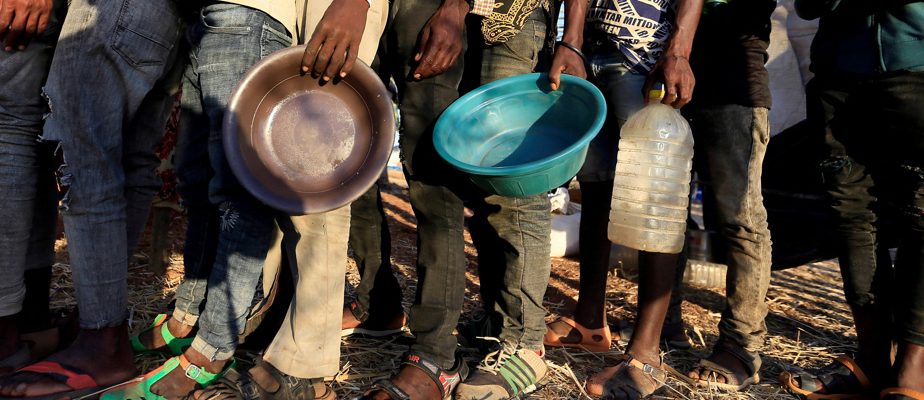(United Nations) The United Nations said on Wednesday that it had “averted famine” in the Horn of Africa thanks to the collection of 2.4 billion dollars for this region hit by a catastrophic drought due to “climate chaos”.
Nearly 32 million people in Kenya, Somalia and Ethiopia will benefit from emergency aid thanks to donations and pledges from countries and international organizations, the Humanitarian Office of the United Nations said in a statement. (Ocha) following a conference in New York co-organized with Italy, Qatar, the United Kingdom and the United States.
“The famine has been avoided”, proclaimed Ocha, even if the United Nations hoped to collect much more money: to protect the inhabitants of this region of East Africa (Ethiopia, Eritrea, Somalia, Djibouti , Kenya and Sudan), seven billion dollars are needed.
The situation remains serious: “Additional resources are urgently needed to avoid a return to the worst-case scenario,” warned the international organization.
The funds will enable humanitarian workers to deliver food and water and to provide care and medical protection for populations.
“The Threat Remains”
But Andrew Mitchell, UK Foreign Secretary for Development and Africa, warned: “The threat [de famine] continues and we must act now to prevent further suffering”.
At the opening of this donors’ conference, UN Secretary General Antonio Guterres solemnly urged the international community to participate in fundraising in order to prevent “people from dying” of starvation.
He said he wanted to “prevent a crisis from turning into a disaster”, arguing that in 2022 donor countries for the Horn of Africa had made it possible to “deliver emergency aid to 20 million people and contribute to averting a famine”.
For Somalia alone, the UN boss reported that “last year, drought claimed 40,000 lives, half of them children under the age of 5”.
And in this east African country, since the start of 2023, more than a million people have been displaced by armed conflict, floods or drought, increasing the risk of famine, according to the agency. Refugee Agency (UNHCR) and the Norwegian Refugee Council (NRC).
In Somalia, with a population of approximately 17 million, more than 3.8 million are displaced “come to aggravate an already disastrous humanitarian situation where some 6.7 million people are struggling to meet their food needs”, insisted in a statement in Nairobi these two humanitarian organizations.
More than half a million children suffer from severe malnutrition, they say.
“Worst climate emergency”
In addition, hammered Antonio Guterres, the “people of the Horn of Africa are paying an insane price for a climate crisis that they have in no way caused”.
This region is even, insisted Ocha, “the epicenter of one of the worst climatic emergencies on the planet”.
For the UN chief, it’s “climate chaos [qui] causes deadly floods and droughts and contributes to the risk of famine”.
In fact, the historic drought affecting the Horn of Africa is the unprecedented conjunction of a lack of rain and high temperatures which could not have occurred without human emissions of greenhouse gases, demonstrated in a study published at the end of April by the World Weather Attribution (WWA), a global network of scientists.
Since the end of 2020, Ethiopia, Eritrea, Somalia, Djibouti, Kenya and Sudan have suffered their worst drought in 40 years.
Before the end of the New York conference on Wednesday evening, Islamic Relief Worldwide, a non-governmental organization founded in the United Kingdom by Muslims outraged by the famine in Africa, had called on donors to “muscle up their ‘shameful’ response to the world’s biggest hunger crisis.
Especially since “Somalia, Ethiopia and Kenya produce only 0.1% of global carbon emissions, while their populations pay the highest price for climate change”.
